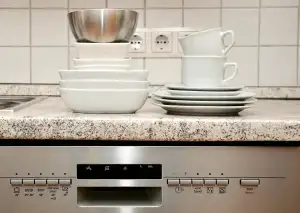Revive Your Rusty Cast Iron: A Step-by-Step Guide to Cleaning and Restoring

Cast iron cookware has been a staple in kitchens for centuries, known for its durability and ability to retain heat. However, over time, cast iron can develop rust, which not only affects its appearance but also its performance. Cleaning and restoring rusty cast iron is a simple process that can revive your beloved cookware and bring it back to its former glory. In this step-by-step guide, we will walk you through the process of cleaning and restoring your rusty cast iron, so you can continue creating delicious culinary masterpieces with confidence.
Gather necessary supplies for cleaning
To begin the process of cleaning your rusty cast iron, it's essential to gather all the necessary supplies. You'll need a stiff brush or steel wool for scrubbing away the rust, as well as a gentle dish soap or vinegar for loosening stubborn spots. Additionally, you'll want to have some paper towels or clean cloth for drying the cast iron after cleaning. Lastly, make sure to have a high-quality cooking oil or seasoning product on hand for re-seasoning the cast iron once it's clean. With these supplies ready, you can proceed to restore your beloved cast iron cookware.
Preparing the cast iron for cleaning
Before you begin the process of cleaning your rusty cast iron, it's important to properly prepare it. Start by removing any loose dirt or debris from the surface using a stiff brush or paper towel. Next, fill a sink or basin with warm water and add a small amount of dish soap. Gently scrub the cast iron with a sponge or soft cloth to remove any remaining dirt or grease. Rinse thoroughly with warm water and pat dry with a clean towel. Make sure the cast iron is completely dry before moving on to the next step.
Scrubbing away the rust
Scrubbing away the rust is an essential step in restoring your cast iron. Start by using a stiff brush or steel wool to remove any loose rust particles. Make sure to scrub all surfaces of the cast iron, including the inside and outside. Apply some elbow grease and scrub vigorously until you see the rust starting to come off. Remember to be gentle with the scrubbing, as you don't want to damage the surface of the cast iron. Once you have removed as much rust as possible, rinse the cast iron thoroughly with warm water to remove any remaining residue.
Removing stubborn rust spots
Removing stubborn rust spots can be a bit more challenging, but with the right techniques, your cast iron can be restored to its former glory. One effective method is to create a paste using equal parts baking soda and water. Apply this paste to the rust spots and let it sit for about 30 minutes. Then, use a scrub brush or steel wool to gently scrub away the rust. For tougher spots, you can also try using white vinegar or lemon juice. These acidic solutions help to break down the rust and make it easier to remove. Remember to rinse the cast iron thoroughly after using any of these methods and dry it completely before moving on to the next step.
Drying and seasoning the cast iron
Once you have successfully removed all the rust from your cast iron, it's important to thoroughly dry it before moving on to the seasoning process. Start by using a clean, dry cloth or paper towel to wipe away any excess moisture. Then, place the cast iron on a stovetop burner set to low heat for a few minutes to ensure all remaining moisture evaporates.
After drying, it's time to season your cast iron. This step is crucial for maintaining its non-stick surface and preventing future rust. Begin by applying a thin layer of vegetable oil or shortening all over the cast iron, including the handle and exterior. Make sure to coat every nook and cranny.
Next, preheat your oven to 350°F (175°C) and place the cast iron upside down on the middle rack. This allows any excess oil to drip off during the seasoning process. Bake for one hour, then turn off the oven and let the cast iron cool completely inside.
Repeat this seasoning process two more times for optimal results. Each time you season, you're building up layers of polymerized oil that create a natural non-stick coating on your cast iron.
Once your cast iron has been dried and seasoned properly, it's ready to be used again! Remember, regular use and proper maintenance will help keep your restored cast iron in top condition for years to come. So go ahead, cook up some delicious meals and enjoy the benefits of your revived culinary companion!
Proper storage and maintenance tips for preventing rust
Proper storage and maintenance are crucial for preventing rust from reoccurring on your newly restored cast iron. Here are some tips to keep your cast iron in pristine condition:
1. Store it in a dry place: Moisture is the enemy of cast iron, so make sure to store it in a dry environment. Avoid leaving it in the sink or on a damp countertop.
2. Use a thin layer of oil: After each use, apply a thin layer of oil to the surface of your cast iron. This will help create a protective barrier against moisture and prevent rust from forming.
3. Avoid using soap: Soap can strip away the seasoning on your cast iron, making it more susceptible to rust. Instead, use hot water and a stiff brush to clean your cookware.
4. Dry thoroughly: After washing, make sure to dry your cast iron completely before storing it. You can do this by placing it over low heat on the stovetop or by using a towel to absorb any remaining moisture.
5. Re-season periodically: Over time, the seasoning on your cast iron may wear off. To maintain its non-stick surface and prevent rust, re-season your cookware every few months or as needed.
By following these storage and maintenance tips, you can enjoy your restored cast iron for years to come without worrying about rust spoiling its beauty and functionality.
Now that you have successfully cleaned and restored your rusty cast iron, it's time to put it to good use! Whether you're a seasoned chef or a novice in the kitchen, cooking with a well-maintained cast iron pan can elevate your culinary adventures to new heights.
The beauty of a restored cast iron lies not only in its durability but also in its ability to distribute heat evenly, resulting in perfectly cooked meals every time. From searing steaks to baking delicious cornbread, your restored cast iron will become an essential tool in your kitchen arsenal.
Remember to continue practicing proper maintenance and storage techniques to prevent rust from reappearing. After each use, make sure to dry your cast iron thoroughly and apply a thin layer of oil before storing it. This will help create a protective barrier against moisture and keep your pan in top-notch condition.
So go ahead, whip up those mouthwatering dishes and savor the flavors that only a well-seasoned cast iron can provide. With proper care and attention, your restored cast iron will be by your side for many culinary adventures to come. Happy cooking!
Published: 09. 12. 2023
Category: Home



